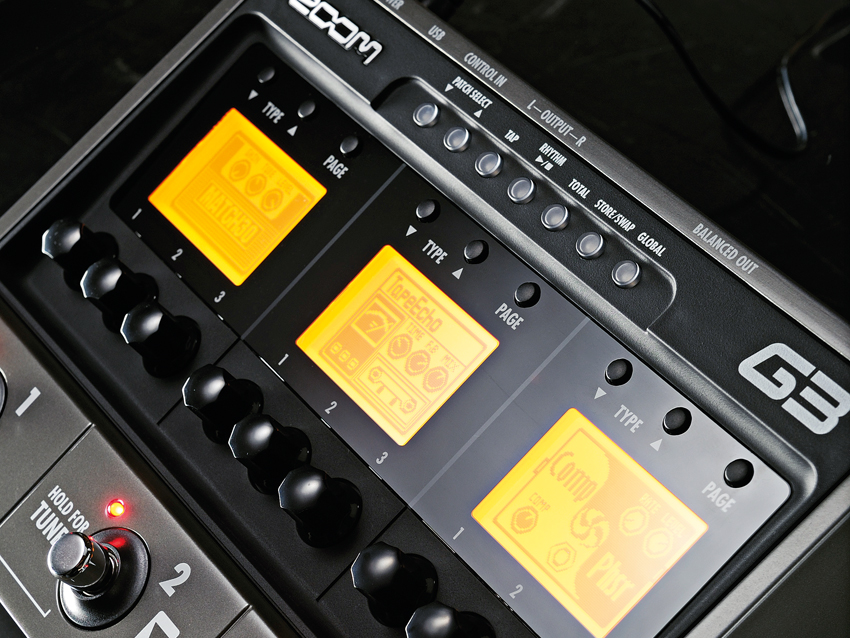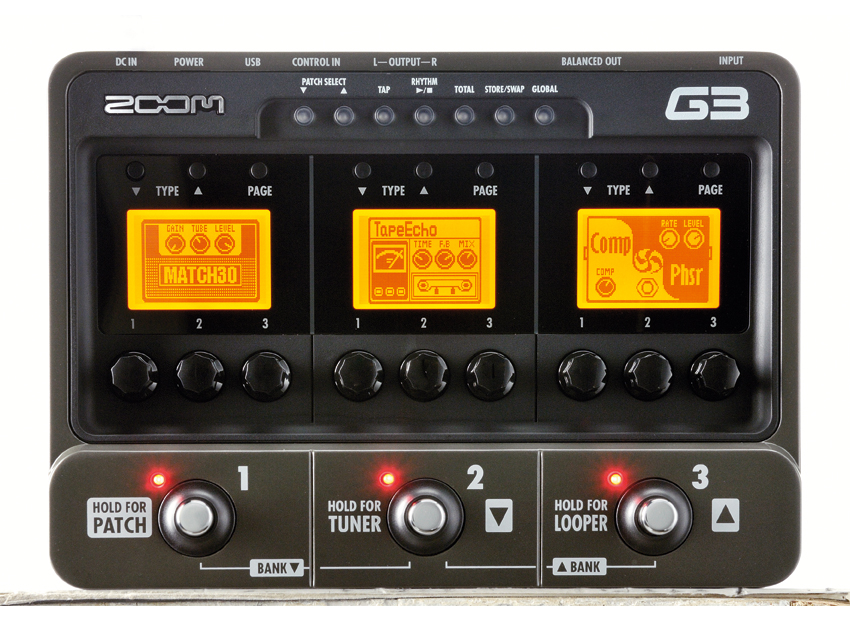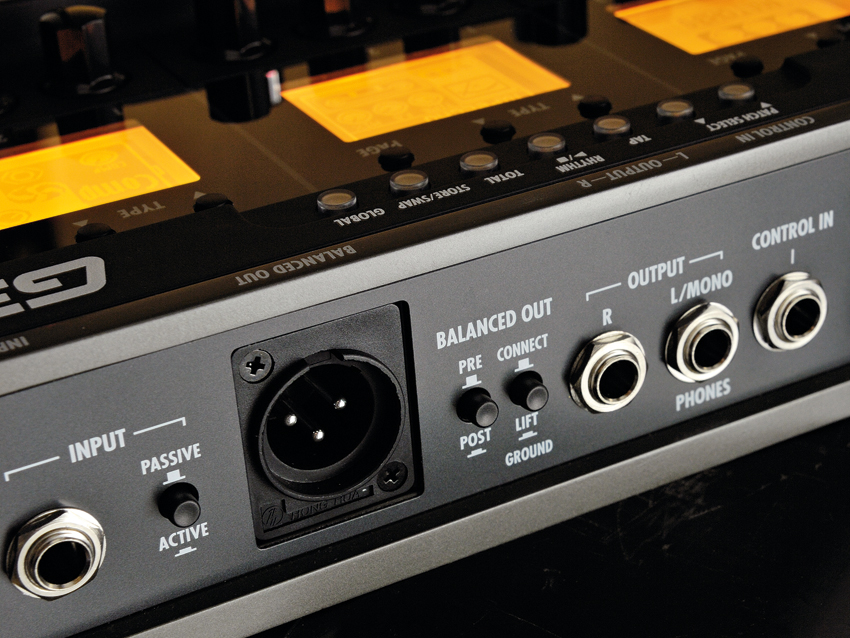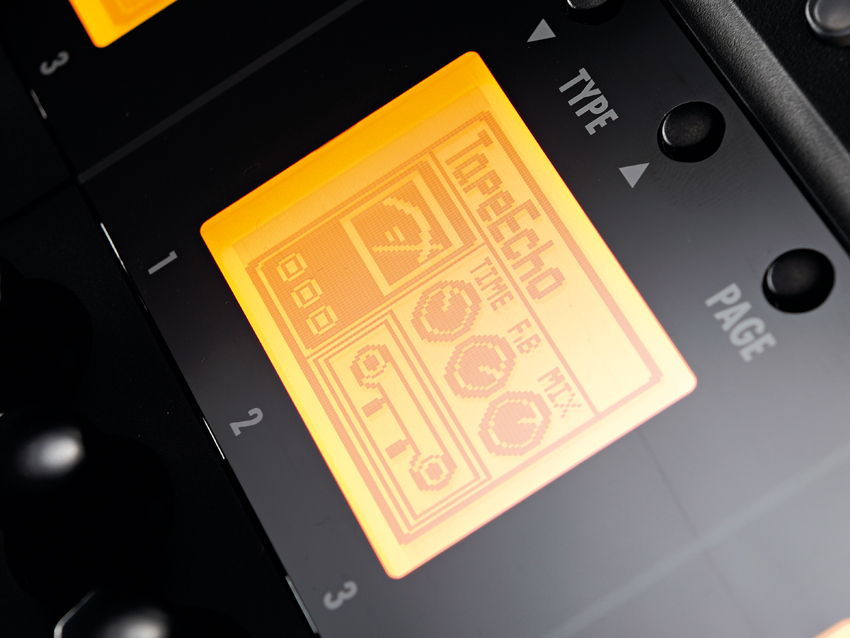MusicRadar Verdict
The most practical multi-FX pedal around for under £200 -quality sounds and loads of ways to use them.
Pros
- +
Solid build. Instant access to three effects. Ease of use. Audio interface with direct monitoring.
Cons
- -
Only two effects can be used in some pedal combinations that feature amp models or HD reverb.
MusicRadar's got your back

Zoom G3

Zoom G3

Zoom G3

Zoom G3
Zoom has been turning out its G series floor pedal multi-FX processors for some time now, but the G3, is something of a departure from what has gone before.
Whereas the G2Nu and G2.1Nu featured recallable patches constructed from a set of nine modules arranged in a set order, the G3 offers patches that are made up of just three modules, each of which can contain any one of 94 stompbox types or 13 amp sims.
"The range of effects on tap is impressive, with loads of different modulation, delay and reverb types, plus some more esoteric options."
Each of the three has its own footswitch for bringing that particular sound in and out of the patch, and each can be tweaked with its own dedicated knobs and buttons. Effectively each one of the 100 onboard patches (in 10 banks of 10) can give you a different array of three separate stompers.
Other features include a 40-second looping capability, a set of 40 onboard rhythms in many styles for playing along (or looping) to and the ability to operate as a two-in/two-out USB audio interface for recording to computer.
With a footprint of about 203 x 254mm, it doesn't take up much more pedalboard space than three separate pedals.
The G3 has a solid metal chassis and rugged footswitches, so should easily stand up to reasonable live use. Practicality seems paramount here - footswitches are easily accessible, the knobs recessed so they are just about impossible to hit with an errant size nine, and the three separate display windows are all clearly visible.
Switch on the unit and the current patch will offer instant access to its three effects via footswitches 1, 2 and 3. You can change patches via the pair of patch select buttons that scroll up or down through the patch list or you can use the footswitches.
Holding down footswitch one puts the unit into a mode where you can use the other two footswitches just likethe patch select buttons - footswitch two selecting the next patch down the list and three the next patch up (you can jump banks by pressing one and two or two and thee simultaneously).
In this mode the patch number shows up in the middle window, and its name in the right window. If you want to access individual effects in the patch you just hold footswitch one down again and the unit reverts to the standard display with a graphic representation of each effect in its own window.
Below each window are three knobs to adjust the effect's parameters. Grab a knob and the graphic display flips to show you the parameters you are editing and their values. If an effect has more than three editable parameters, there will be extra pages to display those, accessed by a small button above the window.
You can quickly change the effect that is assigned to that module via an adjacent pair of cursor buttons above the window that scroll up and down the model list. Any changes that you make to a patch are instantly stored.
In addition to physical editing you also get Zoom's Edit & Share software for easy drag and drop editing on your computer, plus patch storage and download.
Sounds
The range of effects on tap is impressive, with loads of different modulation, delay and reverb types, plus some more esoteric options. Many are models of well-known names; for instance, you get 10overdrive/distortion/fuzz sounds including the Tube Screamer, Rat and Big Muff.
Like Line 6 with its HD modelling, Zoom has upped the ante with its latest ZFX-IV DSP to give higher degrees of realism and playability across the amp models that include Fender, Marshall, Vox, Mesa/Boogie, HiWatt, Orange and Matchless, plus a Diezel Herbert and an impressive Two-Rock Emerald 50.
While the G3 comes loaded with patches that showcase the unit's sonic capabilities, most of them are quite practical, with instantly usable tones formed from a complementary array of individual effects (or amp and effects).
You can, of course, tweak any of them or get rid of the lot - there are lots of different effects combinations to be explored, resulting in a massive range of sounds.
Recording is dead easy via the USB connection, which has a direct monitoring capability so you can hear exactly what you are playing without any latency delay, while, for live use, the combination of patch selection plus effects bypass via footswitch works a treat, and is very flexible in the options it gives you.
For instance, you could have a complete composite sound made up of up to three effects in a patch and switch to the next patch when you need another sound; alternatively you could change patches between songs to give you a different set of three individual effects to use in each song.
And, of course, if you are adept at tap dancing you could switch patches during a song as well as having access to the individual effects. It is possible to save a patch so that none, one, two or three effects are active when it is recalled.
What's more, patch change is exceptionally quick with no audible gap - at one millisecond Zoom says that it's the world's fastest. Further practicality can be had by adding an expression pedal for real time parameter manipulation, or a footswitch for tap tempo and the like - shame there's only one socket so you can't have both, though.
Generally less expensive than other makes, Zoom's products have perhaps been perceived as being outside the effect premier league. We have no doubts, however, that the G3 can take on the big players.
What you have here is a solid box of tricks capable of many tasks - it's a great source of fully formed amp and effects emulations for recording, easily implemented with the USB connection, while those onboard rhythms make it a useful practice tool and could well act as a springboard for songwriting creativity.
It's perhaps in making the transition to the stage that the G3 really excels, though. For those looking to expand their existing pedal selection, this would be a great utility item, effectively adding three independent pedals of any type in a rugged, reasonably compact form.
For those who feel a single floor processor and an amp is enough, the G3 ticks enough boxes to be a contender. With all that plus looping, the verdict has to be that Zoom has brought a lot of elements together to create an extremely versatile asset at a very nice price.
Trevor Curwen has played guitar for several decades – he's also mimed it on the UK's Top of the Pops. Much of his working life, though, has been spent behind the mixing desk, during which time he has built up a solid collection of the guitars, amps and pedals needed to cover just about any studio session. He writes pedal reviews for Guitarist and has contributed to Total Guitar, MusicRadar and Future Music among others.
With its latest free update, Ableton has finally turned Note into the app I always wanted it to be
Technically capable, but struggle to make your tunes sound musical? 5 simple music theory hacks to make your tracks stand out
"Despite its size, it delivers impressive audio quality and premium functions as well as featuring a good selection of inspired sounds": Roland GO:Piano 88PX review










